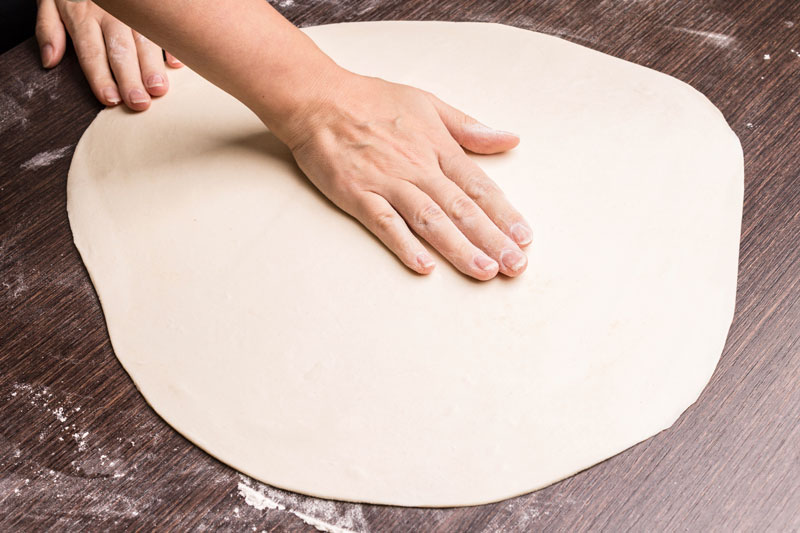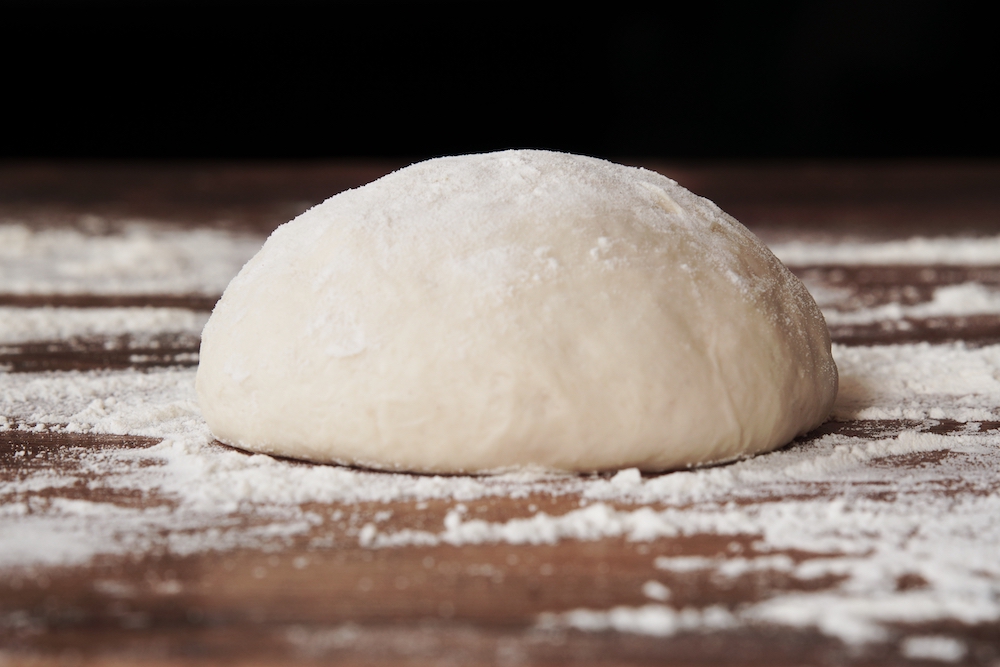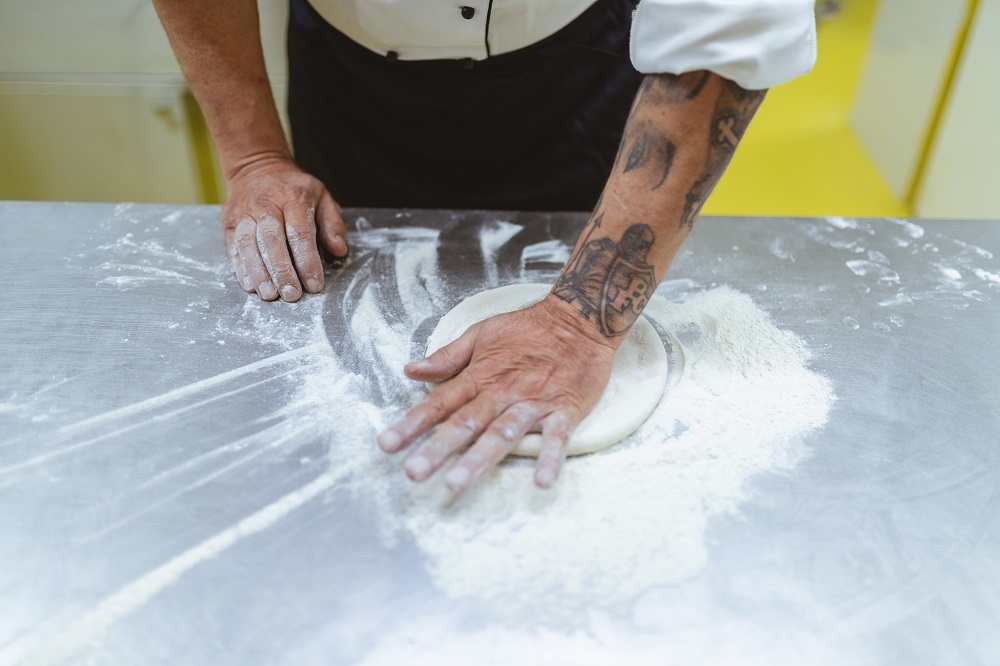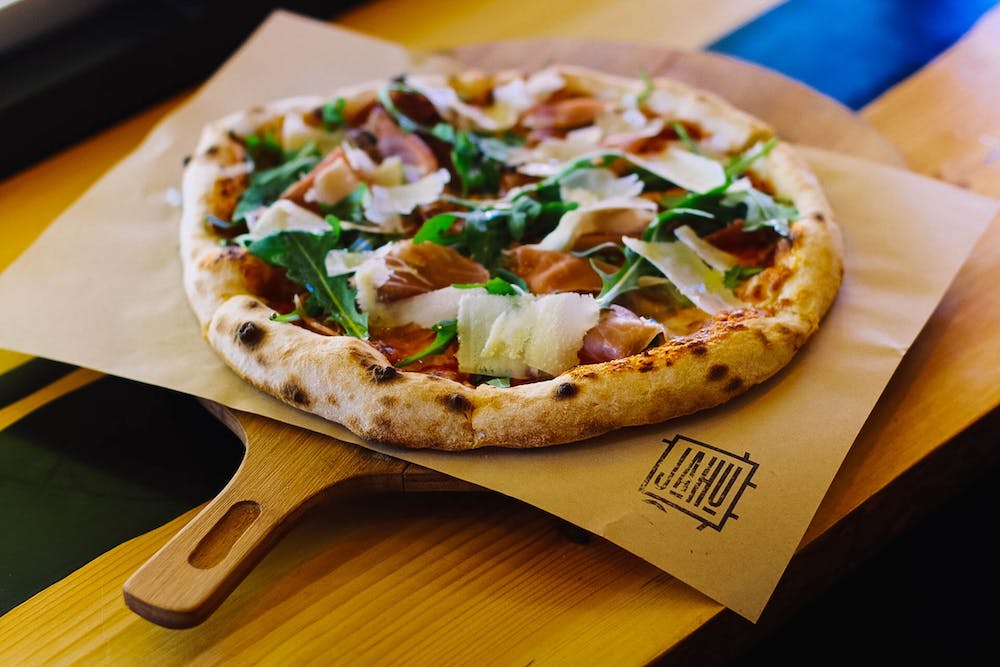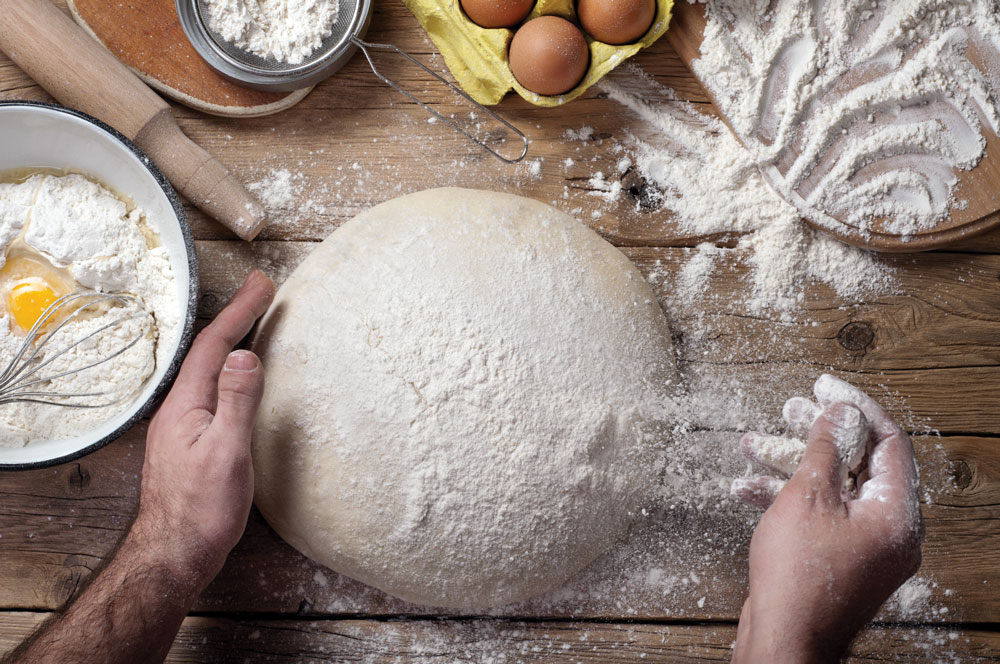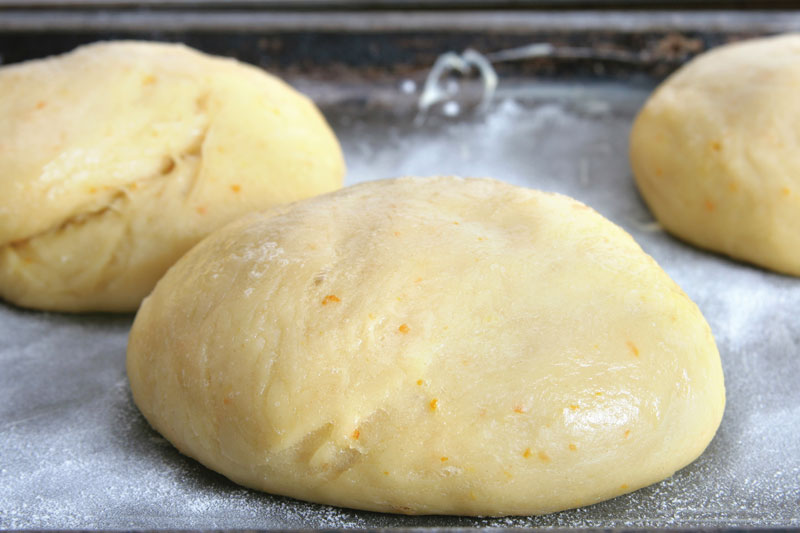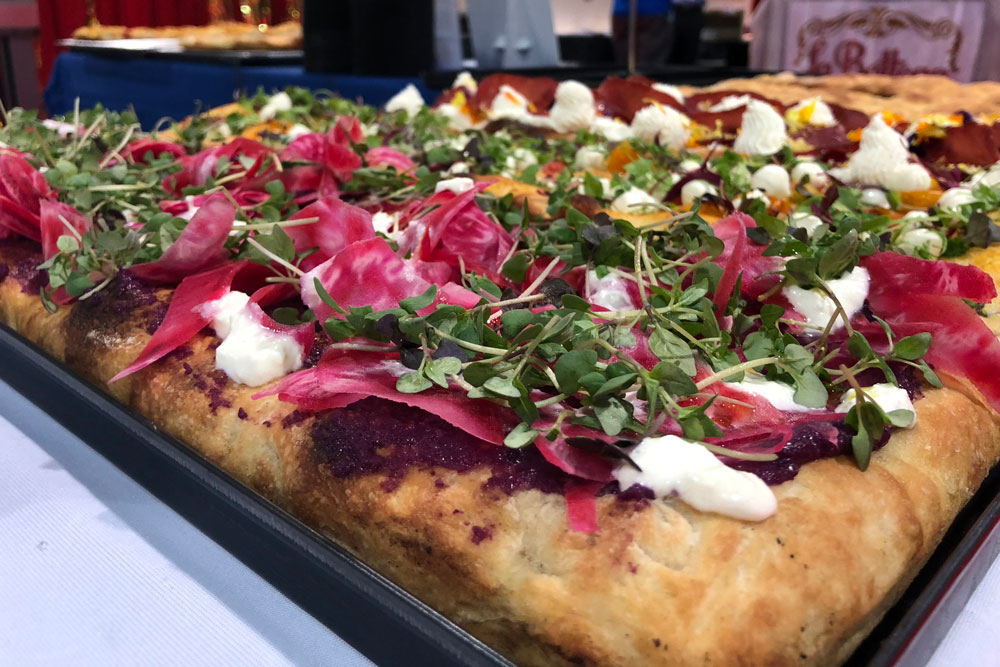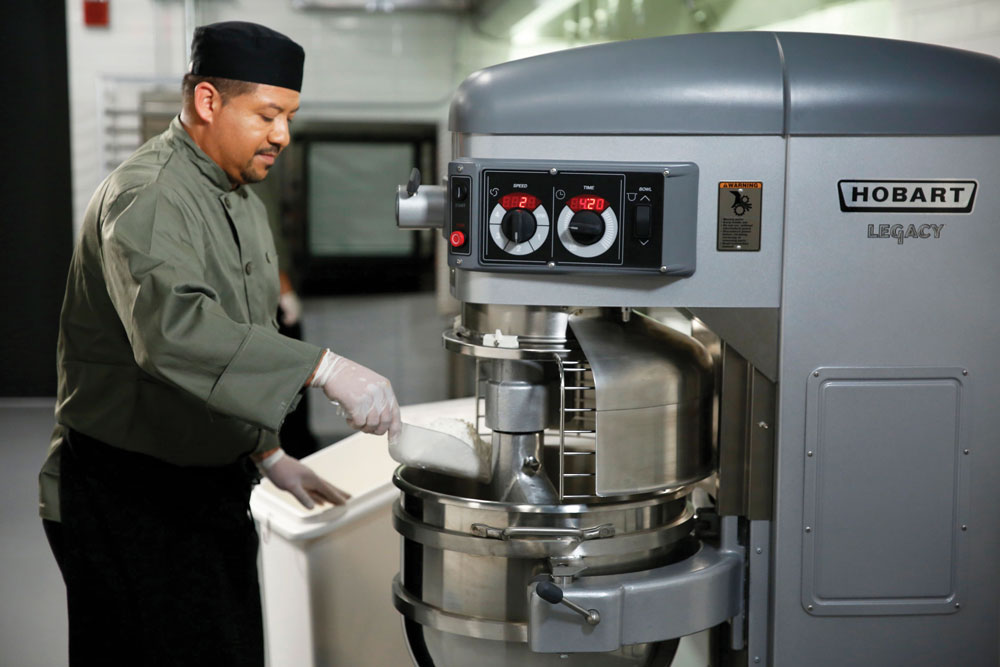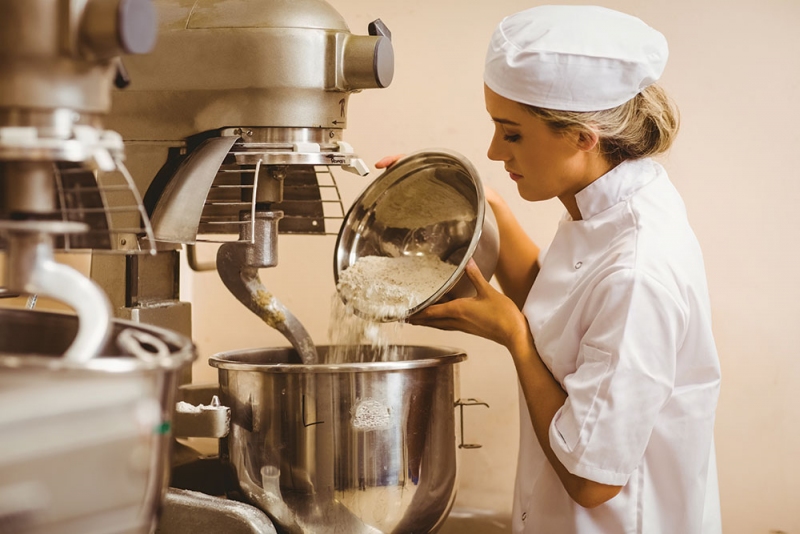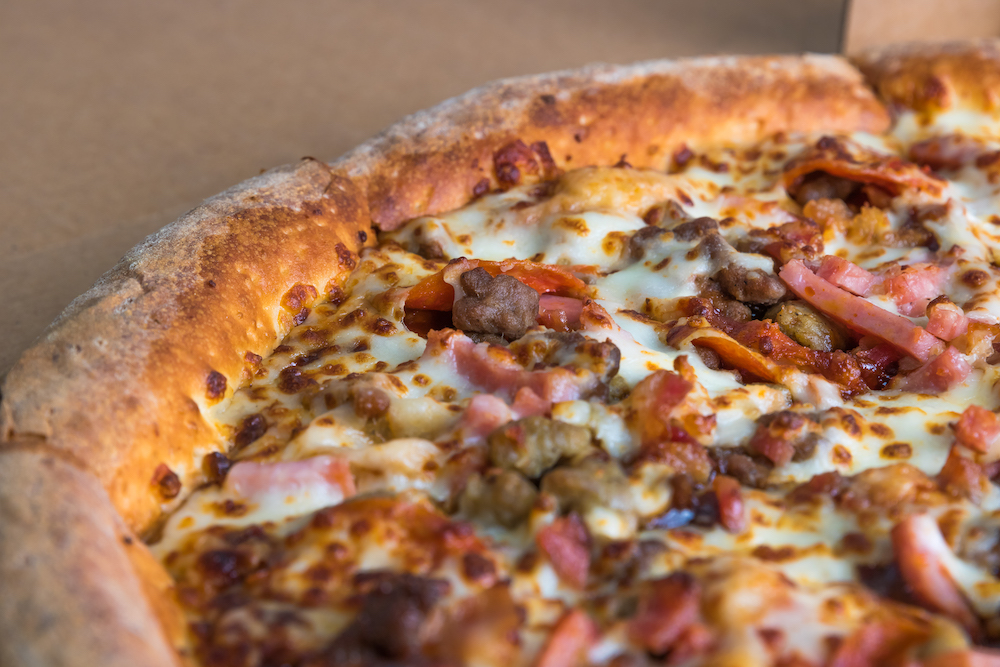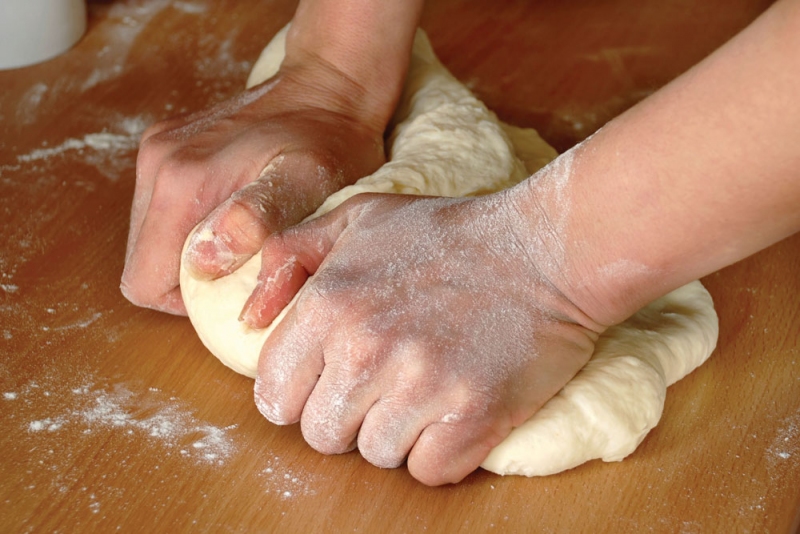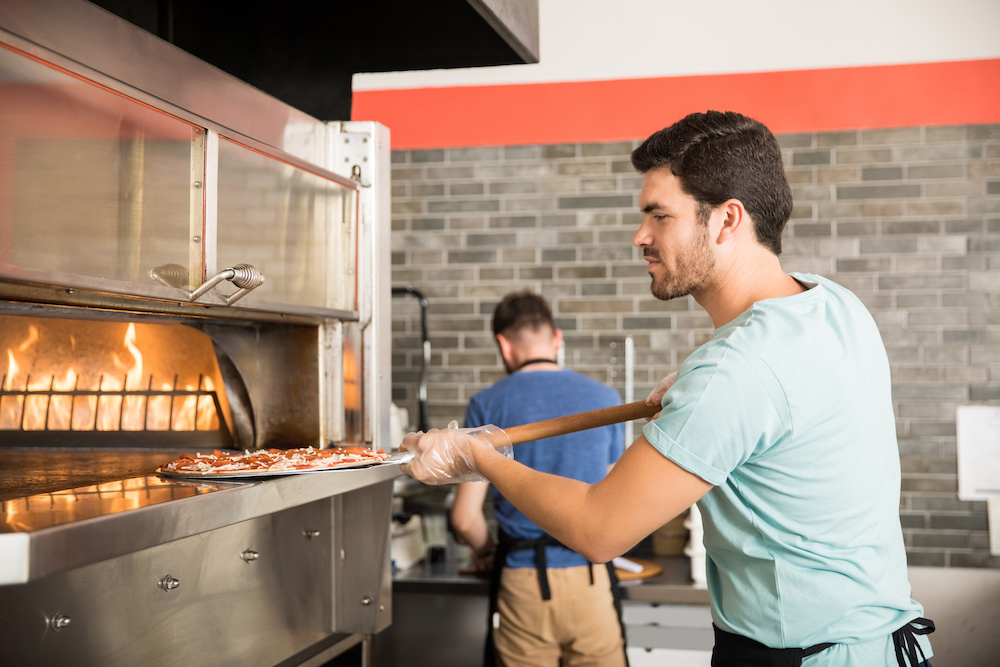Q What’s the best hot press for my operation?
A Last month, we considered how using a dough press might require changes to your dough formula. Now let’s talk about the hot press itself. The hot press utilizes heat to improve the pressing of the dough and to form a skin over the surface of the dough. You can choose a press with a heated head only or one with both a heated head and platen. A press with a heated head only will form a dough skin on one side of the pressed dough piece, while the other side remains raw dough. Place the heated side down, and your dough will continue to rise, which is great for a thick crust or pan-style crust or if you need a thin-crust dough with greater potential to rise, especially around the edges during baking. Some hot presses have a recess in the heated head, which allows for the formation of a raised edge during pressing. In this case, the skin serves to lock in the raised edge, giving the finished crust a raised-edge appearance.
Presses that have both a heated head and bottom/platen can form a skin on both sides of the dough for a somewhat cracker-like crust characteristic. These presses also control oven spring for a more uniform baked height, while the skin formation on both sides of the dough piece allow multiple press pieces to be stacked without sticking together.
For a press with a heated head and platen, set the temperature to around 190°F to 210°F, and the hold or dwell time should be adjusted to give the desired level of skin formation. A shorter dwell time (one or two seconds) yields very little skin formation, so you’ll get more oven spring during baking. A longer dwell time imparts a heavier skin, making the dough less sticky but more reluctant to rise during baking except at high temperatures.
As you can see, dough presses can save time as you convert dough balls into pizza skins and, ultimately, crusts. But you’ll need to know how to formulate your dough (as described last month) to get the best results, and you’ll need to make sure you know how to use your press to achieve your desired crust characteristics.



